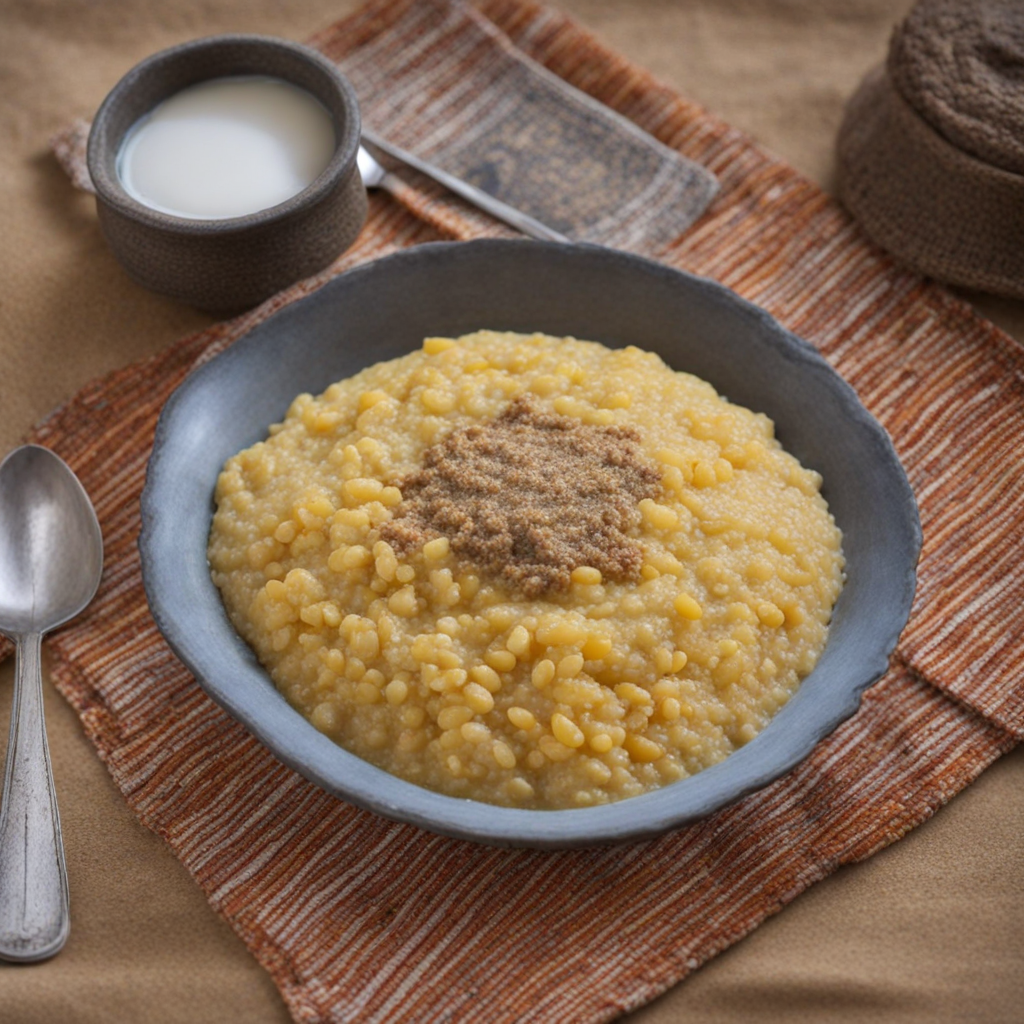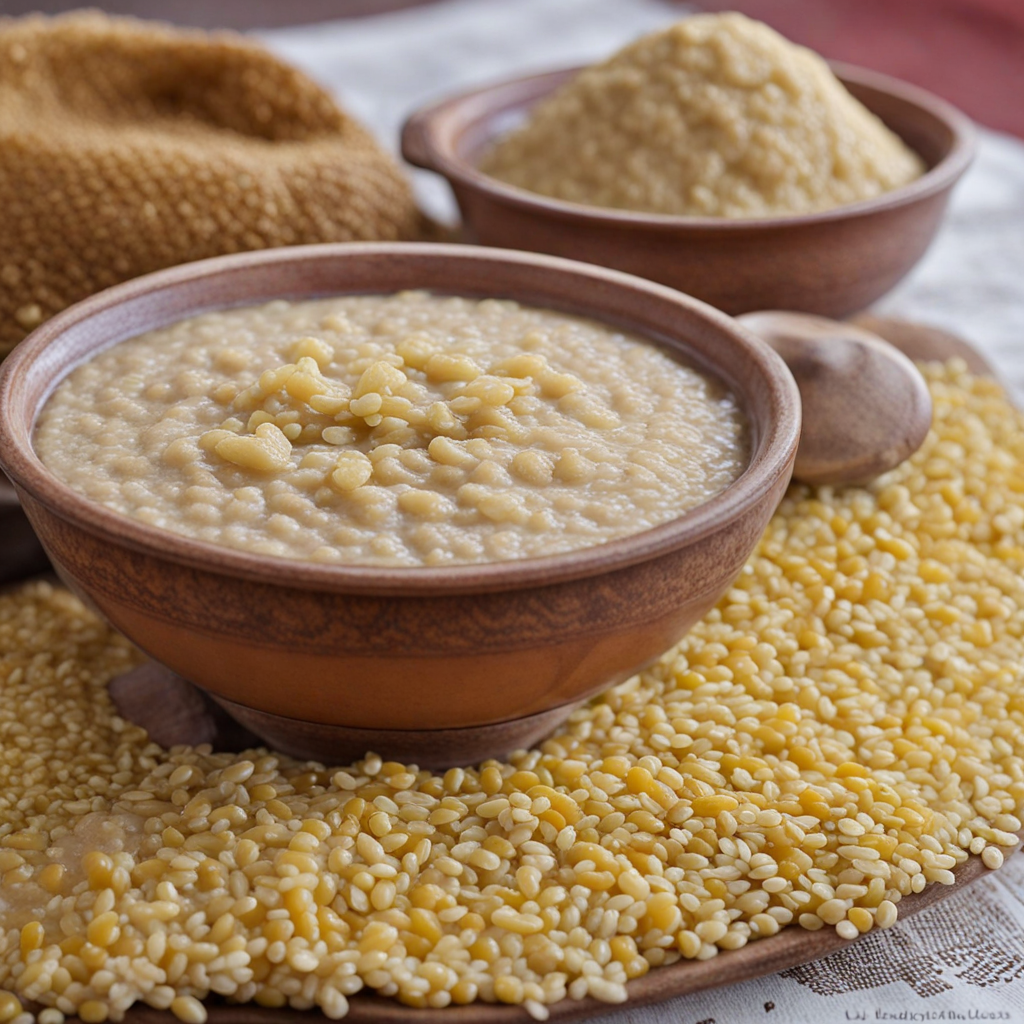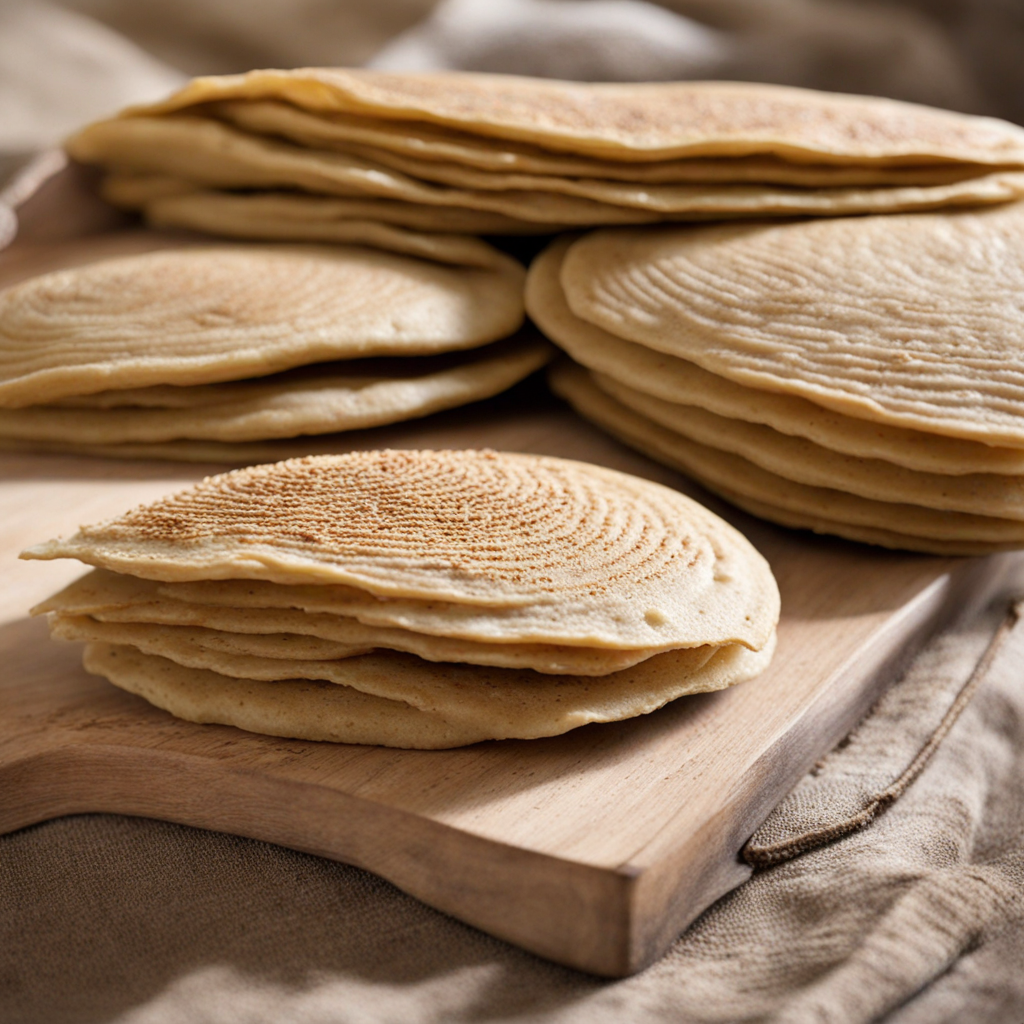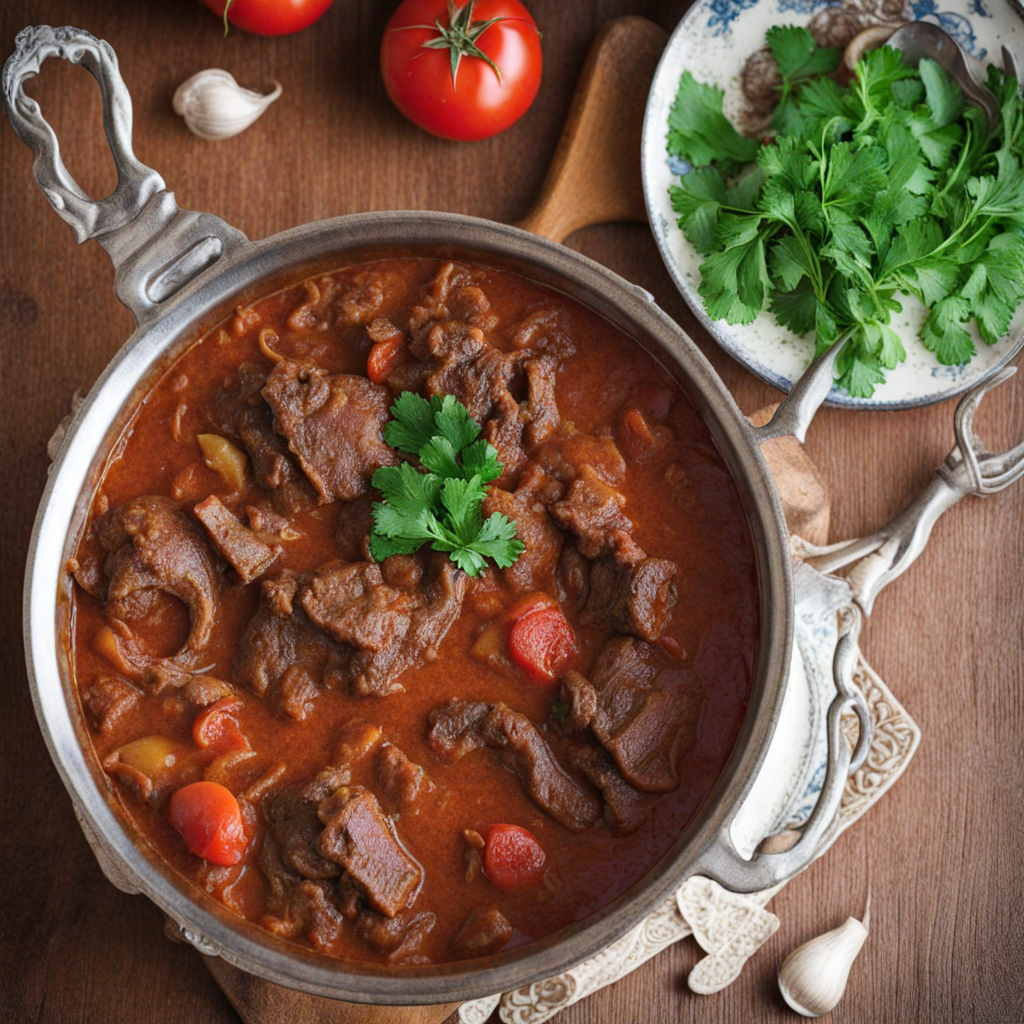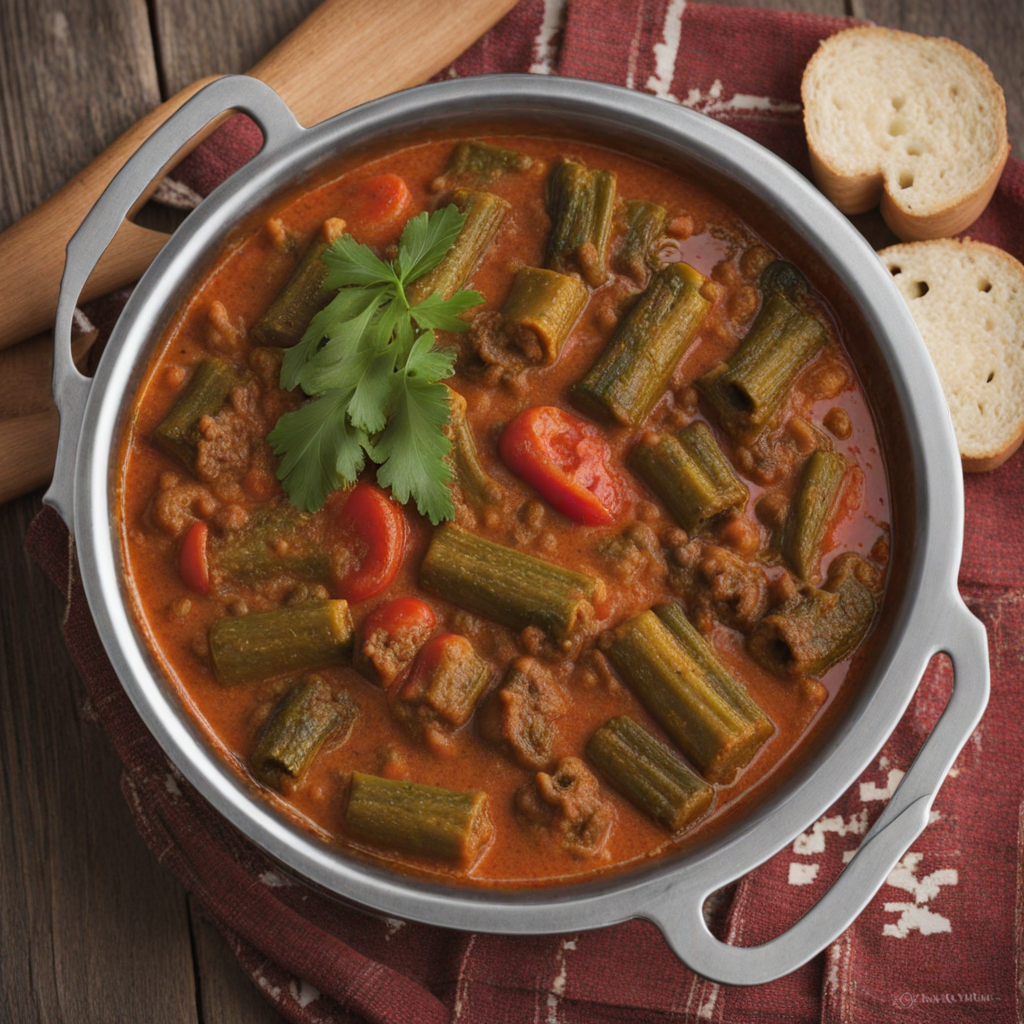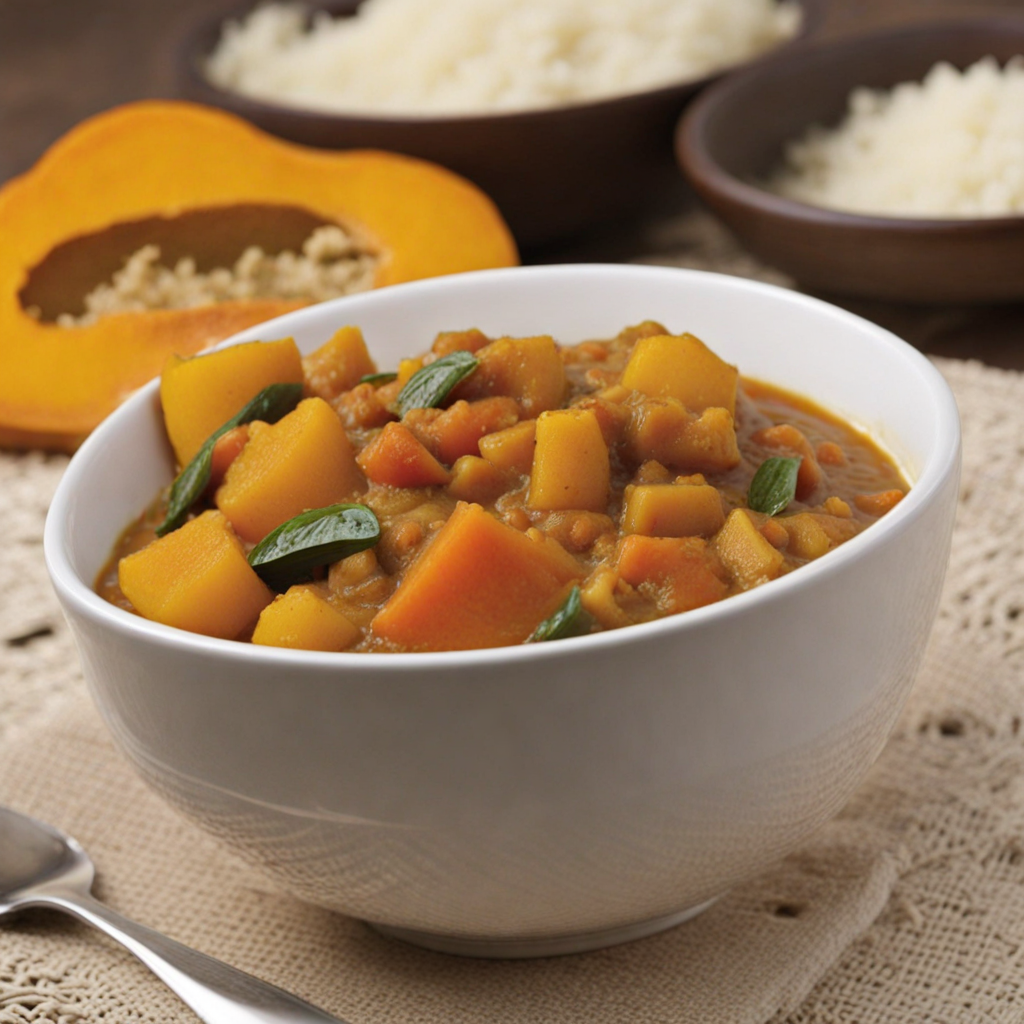La Bouillie
La Bouillie is a traditional dish from Chad that encapsulates the essence of comfort food in West Africa. This nourishing porridge is primarily made from millet or sorghum, which are staple grains in the region. The grains are ground into a fine flour, then cooked with water to create a smooth, creamy texture that is both satisfying and filling. The dish is often enjoyed as a breakfast staple, providing a hearty start to the day, but it can also be served at any meal, reflecting its versatility in Chad's culinary landscape. What sets La Bouillie apart is its adaptability to local tastes and ingredients. While the base is usually the same, it can be enriched with various add-ins such as sugar, honey, or local spices to enhance its flavor. In some regions, it may be topped with nuts, fruits, or even a drizzle of milk, making it not only a delicious dish but also a canvas for creativity. The subtle sweetness and grainy texture create a comforting experience, reminiscent of warm memories and familial gatherings. In Chad, La Bouillie is more than just food; it is a cultural symbol that brings families together. The process of making it often involves communal cooking, where family members gather to prepare the meal, fostering a sense of unity and shared tradition. This dish can be enjoyed as a simple meal or dressed up for special occasions, making it a beloved part of Chadian hospitality. Exploring La Bouillie offers a unique glimpse into the heart of Chad’s culinary heritage and a taste of its rich cultural tapestry.
How It Became This Dish
La Boui: A Culinary Legacy of Chad La Boui, a traditional dish from Chad, is not merely a meal; it is a reflection of the rich tapestry of Chadian culture, history, and communal life. The dish, often made from millet or sorghum flour, is a staple in many households across the country, embodying the resourcefulness of the Chadian people and their connection to the land. To truly understand La Boui, one must delve into its origins, cultural significance, and the evolution it has undergone over time. #### Origins of La Boui The roots of La Boui can be traced back to the nomadic and pastoral societies that have inhabited the Sahel region of Africa for millennia. Millet and sorghum, the main ingredients of La Boui, have been cultivated in this area since ancient times due to their resilience in dry climates. These grains are not only staples for sustenance but are also deeply intertwined with the agricultural practices and seasonal cycles of the region. The word "Boui" itself is derived from "bouillir," which means "to boil" in French, reflecting the colonial influence on the region's language and culinary practices. The preparation of La Boui typically involves boiling the flour with water, resulting in a thick, porridge-like consistency. It can be served with a variety of accompaniments, including sauces made from vegetables, meat, or fish, highlighting the diversity of ingredients available in Chad. #### Cultural Significance La Boui holds a significant place in Chadian culture, serving not just as a nutritional staple but also as a symbol of hospitality and community. In many Chadian households, the preparation and consumption of La Boui is a communal activity. Families gather together to prepare the dish, with each member contributing to the process, from grinding the grains to stirring the pot. This practice fosters a sense of togetherness and reinforces familial bonds. Moreover, La Boui is often served during important cultural events and celebrations, such as weddings, religious ceremonies, and festivals. It is a dish that transcends social classes, enjoyed by both the affluent and the less fortunate. The sharing of La Boui during communal gatherings symbolizes unity, as it is customary to offer food to guests, reinforcing the values of generosity and hospitality that are central to Chadian society. #### Development Over Time Over the years, La Boui has evolved, adapting to changes in society, economics, and the environment. Historically, the dish was prepared using traditional methods, with families relying on locally sourced ingredients. However, the introduction of modern cooking techniques and the availability of new ingredients have altered the preparation of La Boui. The increase in urbanization has also impacted how La Boui is consumed. As more people move to urban areas for work, the demand for quick and convenient meals has risen. This has led to the emergence of street vendors and small eateries specializing in La Boui, making it accessible to a wider audience. The dish has been embraced by younger generations, who often put their own twist on it, incorporating new flavors and ingredients, such as spices and vegetables not traditionally used. Additionally, the globalization of food has introduced new culinary influences to Chad. While traditional La Boui remains a cherished dish, some chefs have begun to experiment with fusion recipes that blend local ingredients with international cuisines. This blending of culinary traditions reflects the dynamic nature of food culture, showcasing how La Boui has both retained its essence while embracing innovation. #### Contemporary Relevance In contemporary Chad, La Boui continues to be a symbol of resilience and adaptation. The country faces numerous challenges, including climate change, which has affected agricultural practices and food security. However, the adaptability of La Boui has allowed it to remain a vital part of the Chadian diet. Efforts to promote sustainable farming practices are being implemented to ensure that the grains used for La Boui can continue to be cultivated in a changing environment. Moreover, La Boui has gained recognition beyond Chad's borders, as the global interest in African cuisines grows. Food enthusiasts and chefs are increasingly highlighting traditional dishes like La Boui, promoting cultural exchange and appreciation. This newfound recognition has also opened doors for Chadian chefs to share their culinary heritage with the world, allowing them to showcase the flavors and techniques that make La Boui unique. #### Conclusion La Boui is more than just a dish; it is a culinary embodiment of Chadian identity and heritage. From its ancient origins rooted in the agricultural practices of the Sahel to its contemporary adaptations in urban kitchens, La Boui encapsulates the resilience and creativity of the Chadian people. As it continues to evolve, the dish remains a crucial part of communal life, symbolizing hospitality, togetherness, and the enduring connection between food and culture. In exploring the history of La Boui, one gains insight not only into a beloved traditional dish but also into the broader narrative of Chad—a story of adaptation, community, and the unbreakable bond between people and their food. As the world continues to embrace diverse culinary traditions, La Boui stands as a testament to the rich cultural heritage of Chad and the importance of preserving and celebrating such legacies for future generations.
You may like
Discover local flavors from Chad


